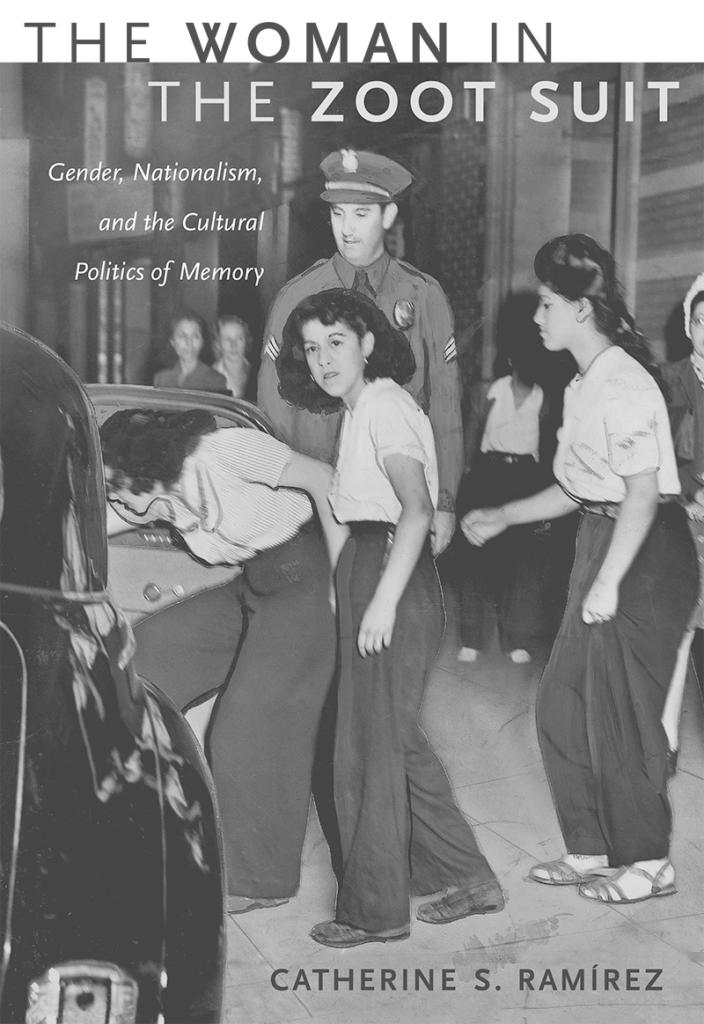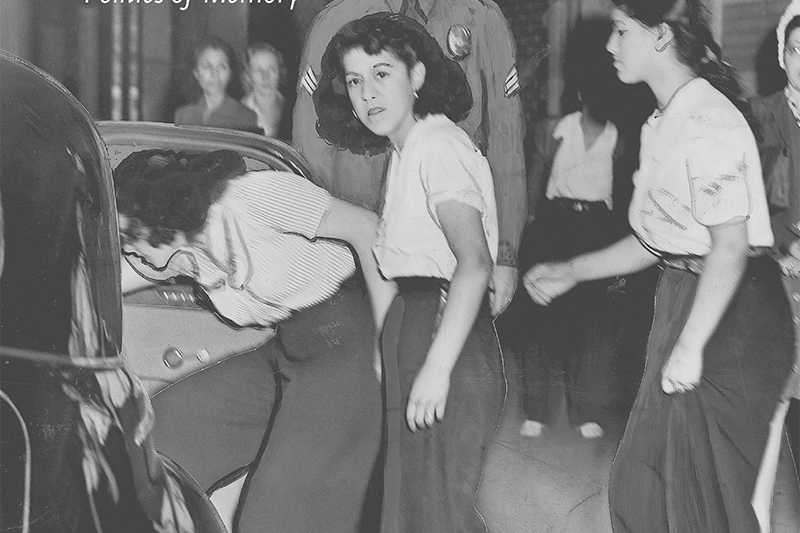
Hailed as “a landmark reconfiguration of the zoot suit and the pachuco” and “a superb model of truly interdisciplinary history,” my first book, The Woman in the Zoot Suit: Gender, Nationalism, and the Cultural Politics of Memory (Duke University Press, 2009), excavates the participation of Mexican American women in the World War II-era zoot subculture and looks at the significance of the figures of the pachuca and pachuco in twentieth-century Chicanx cultural production.
Where Chicano writers and artists of the 1960s, ’70s, and ’80s upheld the pachuco (the male zooter) as an emblem of Chicano style, resistance, and normative masculinity, the pachuca (female zooter) was widely ignored. In The Woman in the Zoot Suit, I scrutinize pachucas’ absence in scholarly and artistic works. I argue that both statist and insurgent — namely, US and Chicano — nationalisms rejected pachucas because these young women threatened gender norms.
Using archival sources, oral history, and textual and visual analysis, I show how pachucas challenged dominant notions of Mexican American and Chicano identity; how Chicana feminists have ascribed new meaning to the figure of the pachuca; and how attention to this overlooked figure allows us to rethink nationalisms, resistance, and the writing of history.
Related Materials
- Why I wrote The Woman in the Zoot Suit.
- e.l.f. x The Pachucas.
- What the zoot look and the “mob wife” aesthetic have in common.
- What the Zoot Suit Riots tell us about twenty-first-century attacks on drag performers and LGBTQ+ people.
- The zoot look’s ongoing impact on American fashion.
- Journalist and former ABC news correspondent Ronald Claiborne reflects on the 80th anniversary of the Zoot Suit Riots.
- In conversation with artist Troy Montes Michie at Contemporary Arts Museum Houston.
- La Mezcla’s Pachuquísmo, an electrifying performance that uses music, dance, and archival images to portray the impact of the Sleepy Lagoon incident and the Zoot Suit Riots on Mexican American women.
